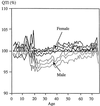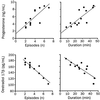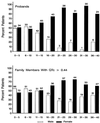Gender and cardiac arrhythmias
- PMID: 11777151
- PMCID: PMC101202
Gender and cardiac arrhythmias
Abstract
The incidence of certain clinical arrhythmias varies between and women. Clinical and experimental observations suggest the existence of true differences in electrophysiologic properties between the sexes. We review these differences, possible mechanisms, clinical implications, and therapeutic considerations in the treatment of various arrhythmias in women.
Figures









References
-
- Linde C. Women and arrhythmias. Pacing Clin Electrophysiol 2000;23:1550–60. - PubMed
-
- Benjamin EJ, Levy D, Vaziri SM, D'Agostino RB, Belanger AJ, Wolf PA. Independent risk factors for atrial fibrillation in a population-based cohort. The Framingham Heart Study. JAMA 1994;271:840–4. - PubMed
-
- Rodriguez LM, de Chillou C, Schlapfer J, Metzger J, Baiyan X, van den Dool A, et al. Age at onset and gender of patients with different types of supraventricular tachycardias. Am J Cardiol 1992;70:1213–5. - PubMed
-
- Timmermans C, Smeets JL, Rodriguez LM, Vrouchos G, van den Dool A, Wellens HJ. Aborted sudden death in the Wolff-Parkinson-White syndrome. Am J Cardiol 1995;76:492–4. - PubMed
-
- Bazett HC. An analysis of the time-relations of electrocardiograms. Heart 1920;7:353–70.
Publication types
MeSH terms
Substances
LinkOut - more resources
Full Text Sources
Medical
